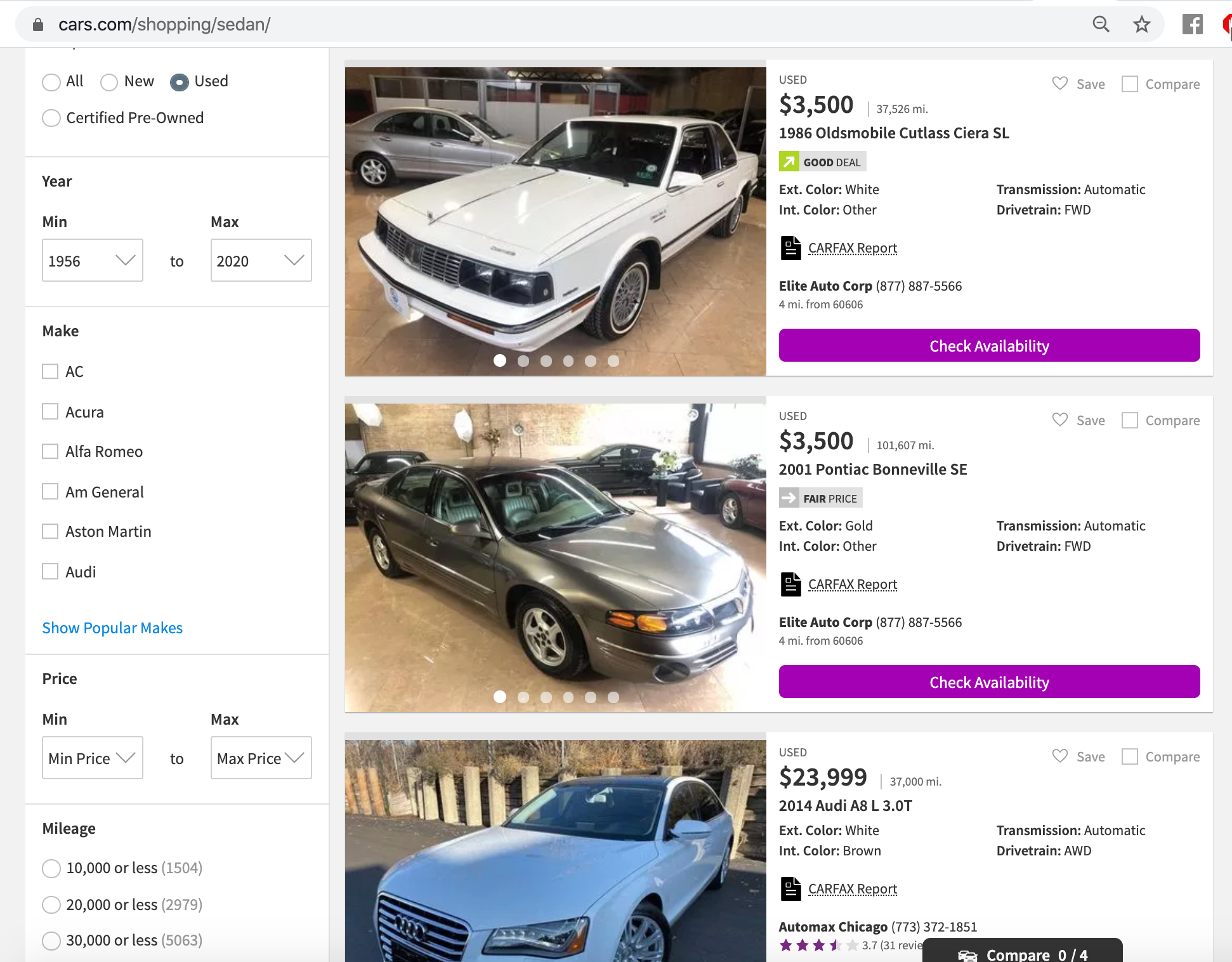Web Scraping Rails
The plackup command starts a standalone Plack web server that hosts the Scraping program. The Scraping code handles request routing, extracts data from the data.html document, produces some basic statistical measures, and then uses the Template::Recall package to generate an HTML report for the user. Scrapingbee is a web scraping API that handles headless browsers and proxy. 👉 NEW Patreon: 👉 Subscribe For More Ruby Videos: https://www.youtube.com/channel/UCkoEStUK7wxmZef2DcPuCAQ?subconfirmation=1👉.
23 May 2015For this tutorial, we are going to build a site with Ruby on Rails that can scrape a particular webpage for some specific information. More specifically, this tutorial will walk you through how to come up with a scraper for the titles and links on Reddit’s front page. You can go to the website and take a look to see what it is we are trying to obtain.
Learning Objectives
By doing this tutorial you should have an understanding of the following:
- How to approach scraping a website
- How to use the Interactive Ruby Shell (IRB)
- How to start a Ruby on Rails project
- What a controller is
- What a view is
Step 1: Try it in the IRB
The IRB is kind of like a sandbox, it allows you to play with (and execute) Ruby code without having to start a huge project or do anything complex at all. That’s why it is often a good idea to try things out in the IRB before we start building a whole site and getting into a lot of complexities, it’s always nice to play with ideas and make sure that they are feasible and that you have some idea of how you’re going to approach the problem you want to solve.
Start the IRB
This tutorial is going to assume that you have both Ruby and Rails already installed. The IRB comes with Ruby, so all you have to do is go to the terminal and type irb. You should get a prompt like this:
You can try to play around with it, but we won’t spend too much time on explaining the IRB itself. You can do simple math like this:
From this point on, I will omit writing the prompt irb(main):001:0>, it’s assumed that you will be typing code at the prompt.
Getting Ready to Scrape
We will need a tool to help us open webpages in our code, and also the ability to go through the HTML and find what we want. The former is accomplished by a wrapper called open-uri and the latter can be done with a parser called nokogiri.
So for our first step, we will require those two tools and then use them to load an entire page into our variable, doc:
Notice that the open function opens the webpage, and then Nokogiri parses it into the doc variable as HTML. You will also see a lot of gibberish being displayed, but that’s actually the information on the page as parsed by Nokogiri.
Identifying What We Want
Now that we’ve grabbed the entire page in the doc variable, we can now mess with it however we want. So let’s try to see how we can get the titles and links of the entries. To do that, we have to understand the structure of how the page is laid out. Let’s go to the browser and find out.
So go to your favourite browser, navigate to reddit.com, right-click one of the entry titles and select inspect element. From inspecting the element of an entry title, you should find something that looks like this:
What this tells us, is that every entry is wrapped inside a <div> with the class entry, and the title and link that we want is represented by an anchor tag <a> inside of a paragraph tag <p> with the class of title.
That’s kind of confusing, so let’s start simple.
Getting at the Information
Let’s start small and simply try to see if we can get a variable that represents all the entries on the page.
Note: Many scrapers use something called X-Path, but for simplicity’s sake, we will use CSS selectors as Nokogiri provides that option for us.
Let’s put all the div tags on the page with a class of entry inside a variable we will call entries:
Let’s check how many we’ve got:
Great! If you go to the front page of Reddit.com in your browser, you can count exactly 35 links on the front page. We’re getting somewhere!
Now let’s try to get the specific title of just one post. We’ll try with just the first post for now, so we’ll use entries[0] as our starting point and try to get more specific from there.
Try the following:
Note that the selector string p.title>a simply means the p tag with a class of title and then get the a tag immediately under that.
If you take a careful look, you should see a representation of exactly the anchor tag we are looking for. In order to get the title and the link, we will use the following code:
The code for the title is quite self-explanatory, it is simply the text of the tag itself. For the link, we have to find the href attribute, and attributes are stored as the first child of the object, so that is why we type [0]['href'] to get the link.
If you type those two lines above, you should be able to see the title and link as displayed by IRB.
Now let’s see if we can list the titles for all 35 entries. Let’s use the .each construct:
Notice how we use puts so that Ruby knows to display it onto our screen.
You should see the titles and their links being displayed in the terminal.
Using a Class
Okay great, we know how to get the information, but this is kind of unwieldy, so let’s attempt to create a class of Entry objects. Each Entry object will house the title and link for easy access. We will then try to create a whole array of these objects so it will be easy for us to manage and move around.
Note that every time we create an Entry object, we will need to initialize it with a title and a link. The initialized values will be assigned to the instance variables @title and @link respectively. The title and link of each Entry object is also made readable by the attr_reader lines.
Now let’s try to make an array of Entry objects:
You can try runing something like entriesArray[0].title or entriesArray[0].link to ensure that this works.
Refactoring
Refactoring means to change the code to make it better (in any number of ways) while keeping its functionality the same.
Let’s refactor the code so that it’s more readable. We can immediately place the newly created Entry object into the entriesArray instead of using the temporary variable newEntry:
Should we refactor again so that we remove the need for the temporary variables of title and link?
This is not so easy to read, so that’s not good. We should refactor to be more concise when possible, but we should not reduce our code so much that it becomes hard to read.

Now we’re ready to make this a Rails app.
Step 2: Make this a Rails App
Web Scraping Reddit
Let’s open a brand new terminal and type in the following to start our brand new Rails app:
After some setup stuff is run, you can cd into the directory and then type in rails server to run the app. Navigate to http://localhost:3000 in your browser to see the default app page.
Routing, Actions, and Controllers
The very basic explanation of what controllers do is this: When you try to access a website run by rails, a bunch of code in the rails app (called a router) will direct it to process a block of code (called an action) inside a particular file (called a controller).
Essentially, a controller is what processes a request sent to the server by a client. And each controller can house different actions.
Web Scraping Rails Tutorial
For our example, let’s add the scrape_reddit action inside our main controller in app/controllers/application_controller.rb:
We just made an action inside the main application controller. Right now, it does nothing other than try to render the text “scrape reddit data here”, we will add more functionality to this later. We just want to see that it works first.

Now let’s point to it with our router so that it loads right away when we load our webpage.

Add the following to app/config/routes.rb
What we’re doing here is to say that the root route should be directed to the application controller and more specifically, the scrape_reddit action within that controller.
Now let’s test it. Go back to your browser and hit refresh. You should simply see the text “scrape reddit data here”.
Great, it works as expected! But we don’t just want to render the text, we want to scrape Reddit’s front page and then render the titles and links.
Scraping a Page
Let’s start small and grab the front page like we did before in IRB. Just for fun we’ll also try to see what happens when we render the retrieved document.
Go back to the browser, refresh and see. No you’re not dreaming, it is actually pulling and displaying the reddit front page itself!
Of course this is overkill, so let’s get more specific and paste our previous code into the scrape_reddit action so that we can grab just the titles and links.
If you tried to refresh and run the changes above, you’ll encounter an error. That’s because we forgot to define our Entry class! So let’s do that right now, outside of the action itself:
Try that.
No error anymore! But all we see is an array of ‘#’ symbols. What’s happening?
Well that’s actually the entriesArray! It’s filled with 35 Entry objects as expected. But since there is no string representation of our Entry object, it’s just ‘#’.
Rendering Template/Views
Okay, we need a smart way to be able to render the Entry objects as a list that the user can see. For this, we need to use a view. This is basically the skeleton with which we will send our data.
Let’s make a new file here: app/views/scrape_reddit.html.erb
This will be our template/view that we render after grabbing the information. So, instead of rendering text at the end of our scrape_reddit action, we are going to make it render the view instead, with the entriesArray. We’ll need to make a couple of changes to our scrape_reddit action in order to do this:
We’ve made two changes:
We have pre-pended the
entriesArrayvariable with an@symbol. This is to make that variable an instance variable so that we can use it inside our view.At the end, we have now changed
render text: entriesArraytorender template: 'scrape_reddit'so that Rails will know to send the data to thescrape_redditview with the data context.
Finally, let’s go back to our view at app/views/scrape_reddit.html.erb and add the following:
So now that we have access to our @entriesArray variable, we can try to display each entry’s title and link property. To do that, we have:
@entriesArray.each do |entry|to start things off so that Rails will know to duplicate the following for each entry in@entriesArrayentry.titleandentry.linkwill allow Rails to render that<p>element with the corresponding data
That’s it! It’s actually qutie straight-forward. You can now go into your browser, refresh the page, and see Reddit’s front page entry titles and links!
Web Scraping Recipes
Related Posts
Web Scraping Realtor.com
Please enable JavaScript to view the comments powered by Disqus.comments powered byWeb Scraping Is Legal
Disqus